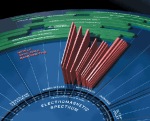 There are several problems to overcome in making spectrum sharing a reality. Some are technical but more often than not, it is easier to overcome those hurdles than commercial ones. So what are those challenges? And when can we expect to resolve them to make spectrum sharing a reality? Continue reading
There are several problems to overcome in making spectrum sharing a reality. Some are technical but more often than not, it is easier to overcome those hurdles than commercial ones. So what are those challenges? And when can we expect to resolve them to make spectrum sharing a reality? Continue reading
Exclusive versus Shared Spectrum: Scarcity to Abundance?
 In a bold move, the President’s Council of Advisors on Science and Technology (PCAST) recommended for federal spectrum to be shared between federal and private sector. This radical departure from “business as usual” when it comes to spectrum management holds much promise for accelerating innovation in the wireless industry. Continue reading
In a bold move, the President’s Council of Advisors on Science and Technology (PCAST) recommended for federal spectrum to be shared between federal and private sector. This radical departure from “business as usual” when it comes to spectrum management holds much promise for accelerating innovation in the wireless industry. Continue reading
Would The Slicing and Dicing of Mobile Traffic Bound Growth?
 In a mid-year update on global mobile data traffic growth, ABI forecasts that the volume will exceed 107 exabytes in 2017, which is eight times the expected volume in 2012. According to ABI research analyst Aapo Markkanen “2015 will be the last year when the traffic volume will grow by more than 50% annually. And that will happen despite of the fact that the monthly average per wireless subscriber, worldwide, will increase to almost 1.5 gigabytes by the end of our forecasting period.” The key point made is that a large source of traffic has been inadvertent data use and this era will come to an end in the next couple of years as fixes are implemented in operating systems and at the application level. Continue reading
In a mid-year update on global mobile data traffic growth, ABI forecasts that the volume will exceed 107 exabytes in 2017, which is eight times the expected volume in 2012. According to ABI research analyst Aapo Markkanen “2015 will be the last year when the traffic volume will grow by more than 50% annually. And that will happen despite of the fact that the monthly average per wireless subscriber, worldwide, will increase to almost 1.5 gigabytes by the end of our forecasting period.” The key point made is that a large source of traffic has been inadvertent data use and this era will come to an end in the next couple of years as fixes are implemented in operating systems and at the application level. Continue reading
Under the Microscope: AT&T’s Nextwave Acquisition
 In the most recent deal, AT&T filed to acquire Nextwave’s WCS (Wireless Communication Services) and AWS (Advanced Wireless Services) assets for $650 million. The bulk of this deal is about the WCS band, so what is this deal about and what does AT&T get for the money? Continue reading
In the most recent deal, AT&T filed to acquire Nextwave’s WCS (Wireless Communication Services) and AWS (Advanced Wireless Services) assets for $650 million. The bulk of this deal is about the WCS band, so what is this deal about and what does AT&T get for the money? Continue reading
Setting a Value on the US 2.3 GHz WCS Band
 When the WCS band was first auctioned off in 1997, 30 MHz of spectrum in 2.3 GHz was sold for $14.8 million. At the time, it seems reasonable to pay that much for spectrum with stringent regulatory requirements on RF out of band emissions to protect the adjacent satellite DARS band (Digital Audio Radio Service). Now, the picture is completely different: AT&T acquisition of Nextwave’s WCS and some AWS assets for $650 sets a new price for the WCS band. It also clearly demonstrates how in spectrum limited market with high demand for mobile broadband services, the price for higher frequencies can increase significantly. So what would the price of the WCS band be and are there any lessons to draw from it? Continue reading
When the WCS band was first auctioned off in 1997, 30 MHz of spectrum in 2.3 GHz was sold for $14.8 million. At the time, it seems reasonable to pay that much for spectrum with stringent regulatory requirements on RF out of band emissions to protect the adjacent satellite DARS band (Digital Audio Radio Service). Now, the picture is completely different: AT&T acquisition of Nextwave’s WCS and some AWS assets for $650 sets a new price for the WCS band. It also clearly demonstrates how in spectrum limited market with high demand for mobile broadband services, the price for higher frequencies can increase significantly. So what would the price of the WCS band be and are there any lessons to draw from it? Continue reading
It’s the Signaling Stupid!
 If you have been following the wireless industry, you for sure would have heard of the capacity crunch and exploding demand for mobile traffic data services. Hardly any presentation by a vendor, analyst, and even operator starts without a graph of future traffic trends. But quietly, another problem has been brewing; one that has received little media attention, but which operators, vendors and industry insiders have recognized as a real and serious issue that warrants much work to contain: it’s the problem of exploding signaling traffic on mobile networks. To illustrate the challenge, Telus reports that in Canada while the data traffic has seen tremendous growth of over 100% year-over-year for the past three years, the signaling traffic has grown by a staggering 2700%. Deutsche Telekom reported 360% increase in signaling traffic over a two year period spanning 2010 and 2011 even with the introduction of techniques that reduce the signaling load. Continue reading
If you have been following the wireless industry, you for sure would have heard of the capacity crunch and exploding demand for mobile traffic data services. Hardly any presentation by a vendor, analyst, and even operator starts without a graph of future traffic trends. But quietly, another problem has been brewing; one that has received little media attention, but which operators, vendors and industry insiders have recognized as a real and serious issue that warrants much work to contain: it’s the problem of exploding signaling traffic on mobile networks. To illustrate the challenge, Telus reports that in Canada while the data traffic has seen tremendous growth of over 100% year-over-year for the past three years, the signaling traffic has grown by a staggering 2700%. Deutsche Telekom reported 360% increase in signaling traffic over a two year period spanning 2010 and 2011 even with the introduction of techniques that reduce the signaling load. Continue reading
Aligning Mobile Services with Spectrum Properties: Information Showers
 One essence of wireless communication does not change: the reliance on spectrum availability. The frequency spectrum is endowed with different features and characteristics that make trade-offs a necessity. One trade-off is that between data rate and mobility. The lower part of the frequency spectrum which is most amenable for mobile services due to economic reasons aggregate in a few gigahertz below the 6 GHz band. By comparison, the entire 60 GHz band features up to 9 GHz of spectrum where atmospheric absorption limits the range of propagation to short distances. As bandwidth correlate with throughput, we achieve much higher data rates at the higher frequency bands which are unfortunately less amenable to mobility services. So, how to bridge this divide? Continue reading
One essence of wireless communication does not change: the reliance on spectrum availability. The frequency spectrum is endowed with different features and characteristics that make trade-offs a necessity. One trade-off is that between data rate and mobility. The lower part of the frequency spectrum which is most amenable for mobile services due to economic reasons aggregate in a few gigahertz below the 6 GHz band. By comparison, the entire 60 GHz band features up to 9 GHz of spectrum where atmospheric absorption limits the range of propagation to short distances. As bandwidth correlate with throughput, we achieve much higher data rates at the higher frequency bands which are unfortunately less amenable to mobility services. So, how to bridge this divide? Continue reading
New Frontiers in Wireless Communications: Extremely High Frequency Communications.
 The success of personal wireless communications may have been inevitable: communications is an essential tenant of human social structure. Coupled with the proliferation of wireless communication has been a drive to open up new bands of frequency spectrum. The most recent example is the millimeter wave band around 60 GHz which was assigned for unlicensed use and is now part of 802.11ad standard activities. In other words, WiFi operation in 60 GHz is work in progress! But looking further ahead, what new bands can be made available? Continue reading
The success of personal wireless communications may have been inevitable: communications is an essential tenant of human social structure. Coupled with the proliferation of wireless communication has been a drive to open up new bands of frequency spectrum. The most recent example is the millimeter wave band around 60 GHz which was assigned for unlicensed use and is now part of 802.11ad standard activities. In other words, WiFi operation in 60 GHz is work in progress! But looking further ahead, what new bands can be made available? Continue reading
Analysis of Brazil’s 2.5 GHz Spectrum Auction Results
The 2.5 GHz LTE auction in Brazil came to an end last week with total proceedings of 2.96 Billion Real ($1.42 Billion). The spectrum included a sliver of 450 MHz spectrum for rural access which regulator Anatel was not able to auction independently and was later included with the 2.5 GHz licenses. Continue reading
Twisted Waves: A New Dimension in Wireless Communication – Part 2.
 Photon Orbital Angular Momentum (OAM) is a new technique to increase wireless channel capacity. However, not everyone agrees that this is a conceptually new area in radio communication and they make the case that OAM is a special mode of MIMO communications. This view was presented in a recent IEEE Transactions on Antennas & Propagation paper.
Photon Orbital Angular Momentum (OAM) is a new technique to increase wireless channel capacity. However, not everyone agrees that this is a conceptually new area in radio communication and they make the case that OAM is a special mode of MIMO communications. This view was presented in a recent IEEE Transactions on Antennas & Propagation paper.
The argument made is that OAM is a unique mode of MIMO theory which is obtained under certain conditions and therefore not a conceptually new area. These conditions are obtained when a circular antenna array configuration is used in free space communication which results in MIMO eigen-modes that are similar to the OAM states. In this case, the argument is that OAM is a sub-class of traditional MIMO communication. Continue reading
Twisted Waves: A New Dimension in Wireless Communication – Part 1.
 In some of my recent postings, I wrote about the limits of the physical layer and what that means for the future of wireless communications systems. Here, I like to mention new research that has promise of increasing the capacity of the physical layer. This new work is based on exploiting a property of electromagnetic waves heavily investigated in the optical range of the electromagnetic spectrum but yet little explored in the radio frequency range. Continue reading
In some of my recent postings, I wrote about the limits of the physical layer and what that means for the future of wireless communications systems. Here, I like to mention new research that has promise of increasing the capacity of the physical layer. This new work is based on exploiting a property of electromagnetic waves heavily investigated in the optical range of the electromagnetic spectrum but yet little explored in the radio frequency range. Continue reading
Evolution of the Air Interface: From 2G Through 4G and Beyond
Below is a link to a recent presentation I made to the local IEEE Ottawa Chapter and the Alliance of IEEE Consultants Network (AICN). I trace the evolution of the air interface of wireless systems from 2G (GSM, CDMA/IS95) through 3G and LTE to LTE-Advanced. Continue reading
Canadian 700 MHz Spectrum Rules: Caps but no Set Asides.
I want to quickly summarize here the rules for the Canadian 700 auction which were recently released by Industry Canada (IC). Continue reading
Reaching The Limits of The Physical Layer: The Slow Shift To Enhancing Efficiency.
There is a general view that we are rapidly approaching the capacity limits of the physical layer. But as demand for capacity continues to grow, the supply of capacity is tapering off. What to do about this and how to continue to inject capacity is being addressed at standardization meetings. Let’s take a quick look at some of these techniques and some of their challenges: Continue reading
Cloud RAN vs. Small Cells: Trading Processing for Transport Cost.
Perhaps you heard of Cloud-based RAN (C-RAN), the latest acronym in the mobile industry. If you are familiar with “base station hotel,” then you’re familiar with this mobile network architecture.
C-RAN takes the distributed base station architecture to its extreme: It pools the baseband processors in a central location and distributes remote radio headends which are connected through dark fiber to the baseband engines. The distance can be as long as 40 km. Continue reading